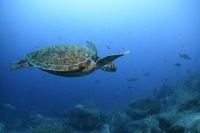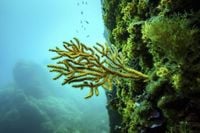After more than two decades of painstaking negotiations and mounting environmental urgency, the United Nations High Seas Treaty is finally set to become a reality. On September 19, 2025, Morocco became the pivotal 60th nation to ratify the agreement, triggering a 120-day countdown for the treaty to enter into legal effect in January 2026. This milestone, described by campaigners as a “turning point in history,” marks the first time a legally binding international framework will govern the conservation and sustainable use of marine biodiversity in the vast, lawless expanse of the world’s high seas.
Officially titled the Agreement on the Conservation and Sustainable Use of Marine Biological Diversity of Areas beyond National Jurisdiction (BBNJ Agreement), the High Seas Treaty provides a long-awaited legal backbone for protecting nearly two-thirds of the ocean and almost half of Earth’s surface—areas that lie beyond the jurisdiction of any single country. According to Oceanographic Magazine, the treaty “will now pave the way for Parties to establish a network of high seas marine protected areas (MPAs), which can help government meet the target of conserving 30% of the global ocean by 2030—a goal adopted by nearly 200 countries in 2022 as part of the Kunming-Montreal global biodiversity framework.”
The excitement and relief among conservationists is palpable. Rebecca Hubbard, director of the High Seas Alliance, called it “the culmination of years of dedication and global diplomacy by governments and stakeholders.” She added, “The High Seas Treaty is a powerful testament to multilateralism—showing what the world can achieve when we come together for the common good of our ocean, which covers more than 70% of the planet. Today marks an important step when promises start becoming action.”
The treaty’s scope is nothing short of historic. For the first time, it enables the creation of marine protected areas in international waters, establishes procedures for environmental impact assessments of planned activities, and sets out rules for potentially destructive practices like deep-sea mining and geoengineering. It also seeks to boost equity for developing countries by increasing access to knowledge and technology, strengthening capacity, and ensuring a fair share of benefits from marine genetic resources.
“The high seas treaty continues to serve as a beacon of hope and demonstrates the power of multilateralism. The speed at which it went from treaty adoption to entering into force is remarkable for an agreement of its scope and impact,” said Nichola Clark, a senior officer with The Pew Charitable Trusts. “When the treaty is implemented, the world will finally be able to protect important places on the high seas, which hold some of the largest reservoirs of biodiversity on Earth.”
But as the ink dries on Morocco’s ratification papers, the real work is just beginning. The treaty enters into force in January 2026, and within a year, the first Conference of the Parties (COP)—the decision-making body—will convene to hammer out the details of implementation, financing, and oversight. Only countries that have ratified before the first COP will have voting rights, raising the stakes for nations still on the fence.
Some of the world’s biggest players remain outside the agreement, at least for now. The United States and China have signed but not ratified, signaling intent without legal obligation, while Japan and Russia are actively participating in preparatory talks but have not formally joined. This gap worries many observers. “If major fishing nations like China, Russia and Japan don’t join, they could undermine the protected areas,” Guillermo Crespo of the International Union for Conservation of Nature told the Associated Press. “It will be interesting to see how the implementation of the treaty will work without those who have historically made the most use of high seas resources.”
The treaty does not create a centralized enforcement body; rather, it relies on individual countries to regulate their own ships and companies. Torsten Thiele, founder of the Global Ocean Trust, explained, “If somebody hasn’t signed up, they’ll argue they’re not bound.” This makes universal ratification not just a goal, but a practical necessity for effective protection.
Despite these challenges, the treaty’s arrival is a watershed moment for ocean governance. The high seas are home to astonishing biodiversity—from whales and sharks to krill and deep-sea corals—and play a crucial role in regulating Earth’s climate by absorbing heat and carbon dioxide and generating half the oxygen we breathe. Yet, as Johan Bergenas of the World Wildlife Fund starkly put it, “The high seas are the world’s largest crime scene—they’re unmanaged, unenforced, and a regulatory legal structure is absolutely necessary.”
The treaty is also a cornerstone for the international “30x30” target, the pledge to protect 30% of the planet’s land and sea by 2030. Countries are now engaged in a Preparatory Commission to develop recommendations for the COP, and some—like Chile—are wasting no time. Chile, one of the first nations to ratify, plans to submit a proposal for the first high seas marine protected area under the treaty.
Dr. Katie Matthews, Oceana’s Chief Scientist, emphasized the urgency: “For too long, the high seas have been a Wild West—lacking comprehensive oversight. The ratification of the High Seas Treaty will help bring order. For the first time, we have the legal foundation to safeguard marine diversity in waters that belong to everyone and no one at the same time. What matters now is turning paper into protection. Nations must move quickly from ratification to real-world implementation. If world leaders are serious about protecting 30% of the ocean by 2030, that requires ambitious action on the high seas.”
The treaty’s significance is not lost on those most vulnerable to ocean changes. For small island nations like Vanuatu, the agreement represents a long-overdue seat at the table in decisions that have historically been made by larger powers. “Everything that affects the ocean affects us,” said Ralph Regenvanu, Vanuatu’s minister for climate change, as reported by the Associated Press.
Still, some experts voice concerns that the treaty could be used as a pretext for inaction in national waters, or that without robust participation and enforcement, its impact may be blunted. Enric Sala, founder of National Geographic Pristine Seas, cautioned, “There are countries that are using the process to justify inaction at home.” Lisa Speer of the Natural Resources Defense Council reminded policymakers that “marine life doesn’t respect political boundaries. So fish migrate across the ocean. Same with turtles, with seabirds, and a whole host of other marine life. And so what happens in the high sea can really affect the health and resilience of the ocean within national jurisdiction, within our coastal waters.”
Ocean exploration pioneer Sylvia Earle offered a note of both celebration and warning: “This is a way station—not the end point. If we continue to take from the ocean at the scale we presently are, and use the ocean as a dump site as we presently are, yes we’re putting the fish and the whales and the krill in Antarctica and the high seas at risk, but mostly, we are putting ourselves at risk.”
As the world prepares for the first Conference of the Parties and a new era of ocean stewardship, the High Seas Treaty stands as a beacon of hope—and a call to action. The months ahead will test whether the international community can turn this historic agreement from words on paper into real, lasting protection for the blue heart of our planet.


